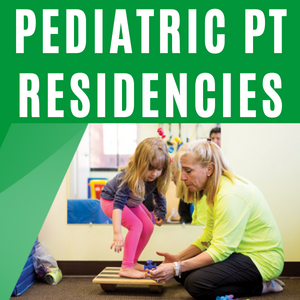Back
Platform presentation
Mobility and Wheelchair Use Are Not Associated with Parent-appraised Positive Psychosocial Functioning in Older Children with Movement Limitations
Friday, November 18, 2022
3:06 PM – 3:23 PM
Location: Grand Ballroom 1

Ryan P. Jacobson, PT, DPT, PCS (he/him/his)
Associate Professor of Physical Therapy
George Fox University
Portland, Oregon
Platform Presenter(s)
Purpose/Hypothesis: Mobility limitations in children with long-term physical disabilities can impact quality of life, but psychosocial factors might be independent of mobility when parents appraise their child’s overall physical, mental and social functioning. The purpose of this study was to determine any association of mobility and wheelchair use with various psychosocial attributes, per parent proxy report.
Number of Subjects: Thirty parents (96.7% mothers; mean age 46.3 ± 6.2 years) of children with physical disabilities (46.7% female; mean age 12.9 ± 3.0, 8 to 17 years; 70% Caucasian). Diagnoses included cerebral palsy (33.3%), developmental coordination disorder (16.7%), Down syndrome (13.3%), and spina bifida (10%), with 40% community wheelchair users.
Materials/Methods: Online anonymous surveys were completed from March through July 2021. Parent-proxy measures included Patient-Reported Outcomes Measurement Information System (PROMIS) Mobility, Peer Relationships (PR), Positive Affect (PA), and Meaning & Purpose (MP); and three items adapted from the Chronic Illness Acceptance Scale. PROMIS measures yield a T-score normed to the US average of 50, standard deviation (SD) of 10. Acceptance scores were summed (7 discrete answer choices per question) out of 21 possible points. Data analysis included Spearman rho coefficients to determine any associations between Mobility and the four psychosocial measures; and Mann-Whitney U tests to compare group mean scores between those who report any wheelchair use (wheelchair yes, vs. no). Bonferroni correction for repeated measures set significance level at p≤.01.
Results: Overall mean scores were Mobility 31.0 (14.9-41.3), PR 35.8 (19.8-54.9), PA 43.7 (29.2-63.0), MP 39.4 (26.7-59.3), and Acceptance 16.2 (12-21). There were no significant correlations between Mobility and the other measures (with PR rho=.12; PA .10; MP .20; Acceptance .26). Interestingly, Acceptance was strongly associated with PR (rho=.70, p<.001) and MP (rho=.72, p<.001), and moderately with PA (rho=.51, p=.004), with no other significant correlations between psychosocial scores. Group mean score comparisons for wheelchair use yes (n=12) vs. no (n=18) were only significant for Mobility (yes 23.5±8.6 vs. no 36.1±4.8; p<.001); with PR 34.0±11.4 vs. 36.9±9.4; PA 44.2±8.5 vs. 43.4±8.8; MP 38.4±6.6 vs. 40.0±8.9; and Acceptance 15.7±2.3 vs. 16.5±2.7.
Conclusions: Psychosocial attributes were independent of mobility independence and wheelchair use in this population. Unexpectedly, acceptance of disability correlated well with multiple PROMIS psychosocial scores.
Clinical Relevance: Measuring psychosocial attributes in pediatric practice might reveal a more complete picture as clinicians seek to understand the impact of mobility gains on overall functioning and quality of life. This analysis suggests that clinicians might integrate strategies to improve relationships, affect, sense of purpose, and acceptance of disability with mobility interventions in older children and adolescents with long-term physical disabilities.
Number of Subjects: Thirty parents (96.7% mothers; mean age 46.3 ± 6.2 years) of children with physical disabilities (46.7% female; mean age 12.9 ± 3.0, 8 to 17 years; 70% Caucasian). Diagnoses included cerebral palsy (33.3%), developmental coordination disorder (16.7%), Down syndrome (13.3%), and spina bifida (10%), with 40% community wheelchair users.
Materials/Methods: Online anonymous surveys were completed from March through July 2021. Parent-proxy measures included Patient-Reported Outcomes Measurement Information System (PROMIS) Mobility, Peer Relationships (PR), Positive Affect (PA), and Meaning & Purpose (MP); and three items adapted from the Chronic Illness Acceptance Scale. PROMIS measures yield a T-score normed to the US average of 50, standard deviation (SD) of 10. Acceptance scores were summed (7 discrete answer choices per question) out of 21 possible points. Data analysis included Spearman rho coefficients to determine any associations between Mobility and the four psychosocial measures; and Mann-Whitney U tests to compare group mean scores between those who report any wheelchair use (wheelchair yes, vs. no). Bonferroni correction for repeated measures set significance level at p≤.01.
Results: Overall mean scores were Mobility 31.0 (14.9-41.3), PR 35.8 (19.8-54.9), PA 43.7 (29.2-63.0), MP 39.4 (26.7-59.3), and Acceptance 16.2 (12-21). There were no significant correlations between Mobility and the other measures (with PR rho=.12; PA .10; MP .20; Acceptance .26). Interestingly, Acceptance was strongly associated with PR (rho=.70, p<.001) and MP (rho=.72, p<.001), and moderately with PA (rho=.51, p=.004), with no other significant correlations between psychosocial scores. Group mean score comparisons for wheelchair use yes (n=12) vs. no (n=18) were only significant for Mobility (yes 23.5±8.6 vs. no 36.1±4.8; p<.001); with PR 34.0±11.4 vs. 36.9±9.4; PA 44.2±8.5 vs. 43.4±8.8; MP 38.4±6.6 vs. 40.0±8.9; and Acceptance 15.7±2.3 vs. 16.5±2.7.
Conclusions: Psychosocial attributes were independent of mobility independence and wheelchair use in this population. Unexpectedly, acceptance of disability correlated well with multiple PROMIS psychosocial scores.
Clinical Relevance: Measuring psychosocial attributes in pediatric practice might reveal a more complete picture as clinicians seek to understand the impact of mobility gains on overall functioning and quality of life. This analysis suggests that clinicians might integrate strategies to improve relationships, affect, sense of purpose, and acceptance of disability with mobility interventions in older children and adolescents with long-term physical disabilities.

.jpg)
.png)
.png)
.png)
.png)
.png)
